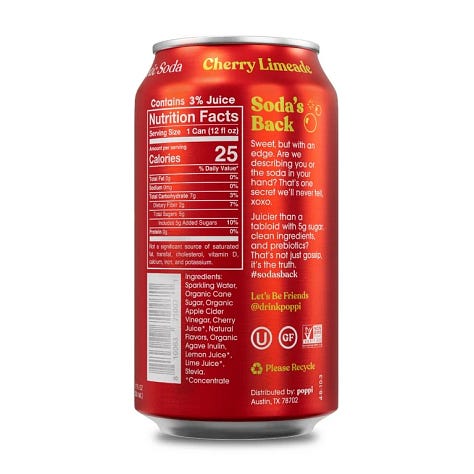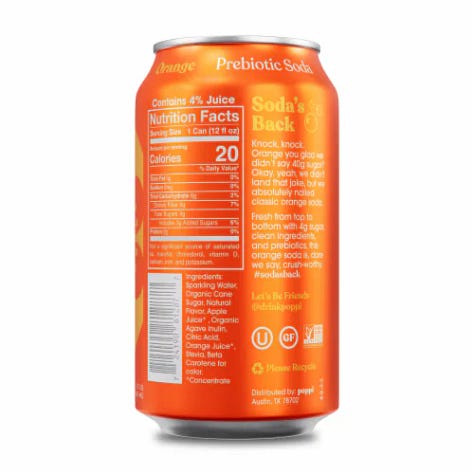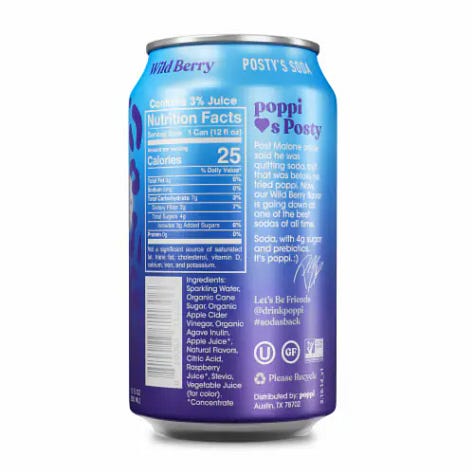I Want Brands to Sell Me Something Again
Quippy copywriting and chronically online jokes do nothing for me, remind me of your points of difference and product benefits again. Hell, offer me a coupon.
“Hey dumbass, I’m a brand your friend!”
👆🏻 My high-level synthesis of the way so many brands show up online today, from the obvious social media comments to e-comm tiles and “About Us” narratives on their own websites. When it comes to brand voice, we’re experiencing monotone.
A Quick Refresher on Tone of Voice
Writer or not, most of us understand tone. It’s how we sound when we speak, when we write, generally how we come across when we communicate in general. Now listen, I consider myself an expert on very few things. In fact, I barely consider myself an expert on this, but I’ve worked in brand strategy for …almost ten years. That said, it’s with shaky-handed, semi-authority I say this: brands have a tone of voice problem.
You could call it ‘The Optimized Everyman Tone’, especially present on emails and social media marketing. It’s the quippy one liner on the back of your shampoo bottle: “This cleans your hair, diva!” The paragraph on your Poppi can that’s semi-horny, or the olive oil that tells you “friends let friends know about fresh products and content.” then slams an email sign-up across your screen.
It’s a little, “how do you do, fellow kids?” It’s the battle of the brands— attempting to prove whose screen time is higher. It used to be fun, but now most of us are telling them to go touch grass. Or in my case, to revisit a brand pyramid or corporate offsite or …something.



And to be fair, brands have always struggled with honing their TOV. They want to be approachable, but not value-driven (i.e. “cheap”) They want to show their expertise and authority, but not in a way that makes them seem condescending or alienating.
They want to be appeal to the largest group of people possible ($$$) but they can’t be everybody’s buddy.
“Ariana What Are You Doing Here?”
(Link to the above reference if you’re not deeply, unsettlingly online.)
While serendipitous and fun to see brand accounts in the comments of sometimes-wild, and random videos at first, it’s become a little eye-roll inducing. I referenced this a few months back when we were in the grips of the Very Mindful, Very Demure epidemic. Quoting myself on my own blog? Why not! 👇🏻👇🏻👇🏻
As someone who works with brands every day, I see first hand how much or how little care goes into defining a brand’s tone of voice, how they sound and show up to consumers. When brands jump on these quick-churn ways of speaking, they lose that voice and any sort of distinction that could render them authentic to a consumer. Personally, I’m starting to wonder if all brands should have social media. - Me
What started as a way for brands to “fit in” and appeal to younger audiences has become brands just saying shit for the sake of saying shit. They pop up everywhere and become even more inescapable than a 30 second pop-up ad before the YouTube video you actually want to watch. Why is this so irritating? Because the only thing worse than a brand showing up to sell you something, is a brand showing up just to say shit for no reason at all.
Thanks for sucking the air out of the comment section Chase Bank, it’s important to me that you think I ‘slay boots’ I guess!
Maybe it would’ve remained palatable for longer if these comments felt aligned to the brand that was saying them. What made them powerful scroll-stoppers in the beginning is that you felt like you got a voyeuristic look into the hidden persona of the brand, the vibe behind the usual buttoned-up, customer service, front-facing, “How Can We Help?” attitudes brands have historically taken.
It’s possible there’d be more longevity if every back-of-pack, branded-post, or advertisement didn’t adopt lower-case, snarky net-speak as their strategy in toto.
It’s a similar problem to why everyone thinks influencers are boring now. It pays to appeal to All-Powerful, Algorithmic Entities in the hopes to be rewarded with riches. (Likes, engagement, views, and in brands case, buys.) So of course, once the success tactics are found they’re repeated. And repeated, and repeated, and repeated and—
No personality. Very oblivious, very insufferable.
The Brand Personality Problem
Does a brand need a personality? Are corporations people too? Do people notice or care?
If you’re like, ‘Anna I don’t work with brands I just absorb them and buy stuff like a normal person, what do you mean they have personalities?’ First I’d like to say, I’m so jealous. Second, I’ll explain with an easy example as to why brand personalities exist and why they work, whether you notice them or not.
Ex: Starbucks vs. Dunkin’
Two coffee companies, different strategies, distinct personalities. Starbucks (whether you agree or not) defines themselves as about artistry, craft, and tends to lean a bit more premium. You can see it in the styles of products offered, the tonality, and even the colors they use. Dunkin’ is the everyman’s coffee. America runs on it, remember? It’s more light-hearted, leans a little silly-goofier, a different personality.
To put it simply, brand personalities are one of the factors that help us decide if we wanna fw them or not. And when that personality has been neutered or deprioritized we notice, we eye-roll, and we wonder why they’re in the comments of someones 3 part breakup story-time. We don’t run to their channels, or their site, or their store and buy from them. (At least not always.)
Like, Nutter Butter’s feral social presence was cool and admittedly funny, but did you buy more Nutter Butters?
I get it, it’s like ‘who has time for personality anymore!!!’ The consumers are hungry and the algo-gods will change their minds tomorrow and we’ll have to jump on the next thing. Agility takes a new form, it happens. Attention spans are shortened and brands have to show up in more fragmented ways. In the pursuit of attention, they run to comments and viral trends to get your eyes on them for those precious few seconds. Which leads me to…
Just Sell Me Something
Brands, this is for you: it’s okay, divas. You don’t need to be my bestie, we don’t need to queen out. Sometimes I need laundry detergent and that’s enough.
In the pursuit of authenticity as defined by the 2010’s and early 2020’s this stuff worked, but now I’d argue it creates a unique form of brand dystopia. It’s made “authenticity” feel icky. This video makes an incredible point, I’d call it pragmatic course-correction, a shift for things to show up and do what they say they will, and look like what they’re “supposed to.”
“A boss should look like a boss, not a whistler ski bum. My work should look like work, not a college common room, and brands should show up like brands not my high school bestie.” - eugbrandstrat
Eugene goes onto say that brands should give us fiction, which I think is fair… lots of brands should do that, but for some, I’d argue that brands don’t need to give us anything but what they’ve promised. Products that work and make our lives easier.
The brand promise that the product will do what it says, do it well, and I can then turn my brain off and move to the next thing.
Even visually, the blanding of 5 years ago and the Gen Z expressive aesthetics we see today from BBQ sauces to pimple patches is starting to feel a little tired. I don’t know that I need mayonnaise to be aesthetically pleasing, but it’s fine that it is.
Does it taste good? And more importantly in today’s economic climate, does it fit in my budget? Can I rely on that? Great. It doesn’t need to make a little joke if it doesn’t want to. It doesn’t need to know what a “pick-me” girl is.
Now, I’d like to make it clear that I’m not making the case for less brand strategy, in fact I’m saying that it’s now more important than ever. Storytelling isn’t dead, in the face of all this tone ubiquity we need distinct stories more than ever. I’m just wondering out loud that in the pursuit of ‘prettiest, funniest brand in the market’, have brands homogenized themselves into forgetting what makes their offerings truly desirable to begin with.
A friend to all is a friend to none, brands should talk to their audiences again as themselves. And if they don’t know who they are anymore, they can come to people like me (a brand strategist ✌🏻😗🤪) to help. Anyway, I did not spellcheck, nor proof read this!










Nutter Butter's social presence actually did work in terms of selling more Nutter Butters (https://www.milkkarten.net/p/nutter-butter-committed-to-the-bitit)
But overall I agree that brand voice (and brand humor) is becoming homogenous and one-note. I think we can expect this to change as we possibly head into a recession - like stop trying to be cute just give me a fqing coupon
ALLL of my exact thoughts reading Buc-ees billboards plastered everywhere around Texas, like pleaassee you are just a gas station 😭
https://www.reddit.com/r/mildlyinteresting/comments/1cpoxof/this_unfortunate_combination_of_billboards_i_saw/
https://www.dailymail.co.uk/yourmoney/consumer/article-13715887/Americas-best-loved-convenience-store-winning-Gen-Z-beaver-nuggets.html